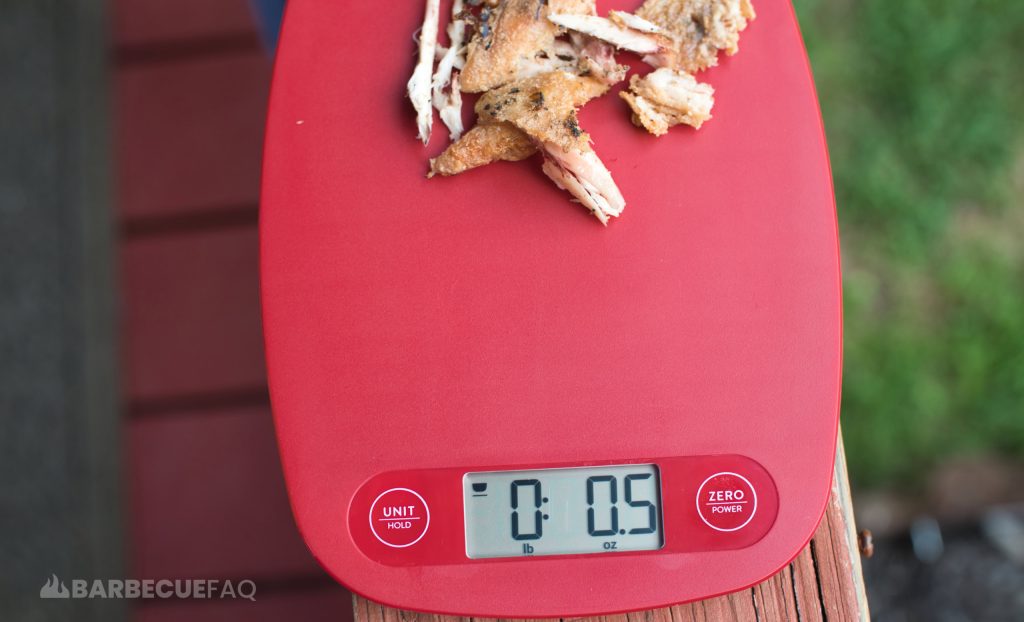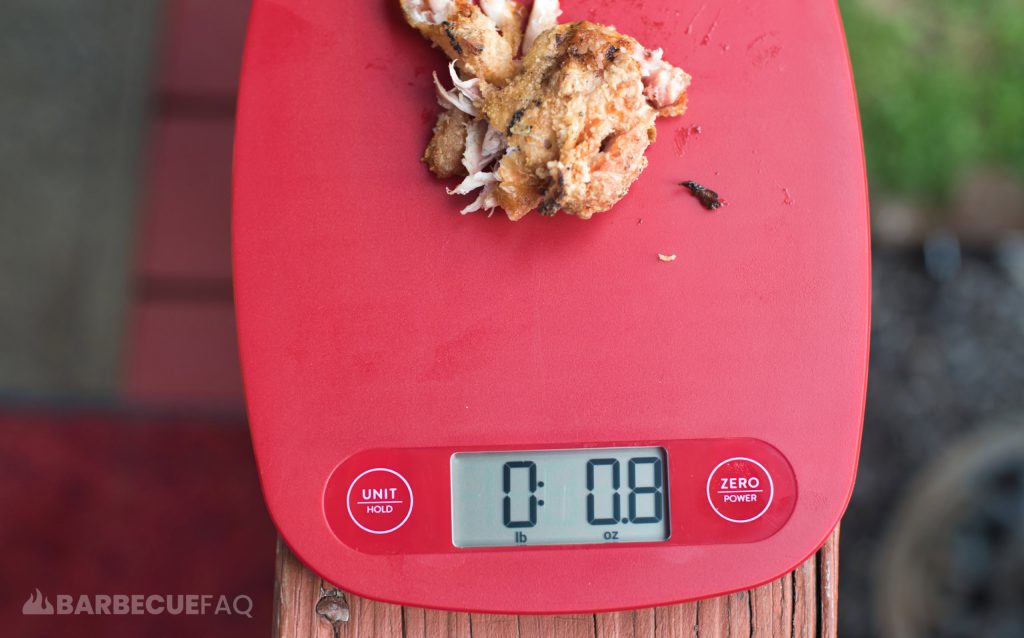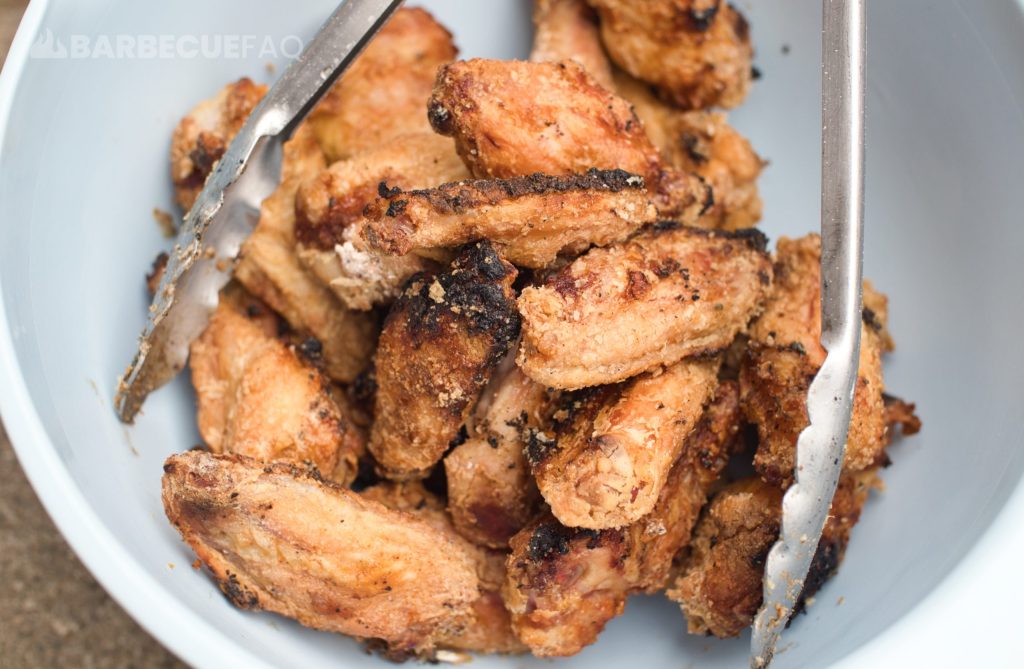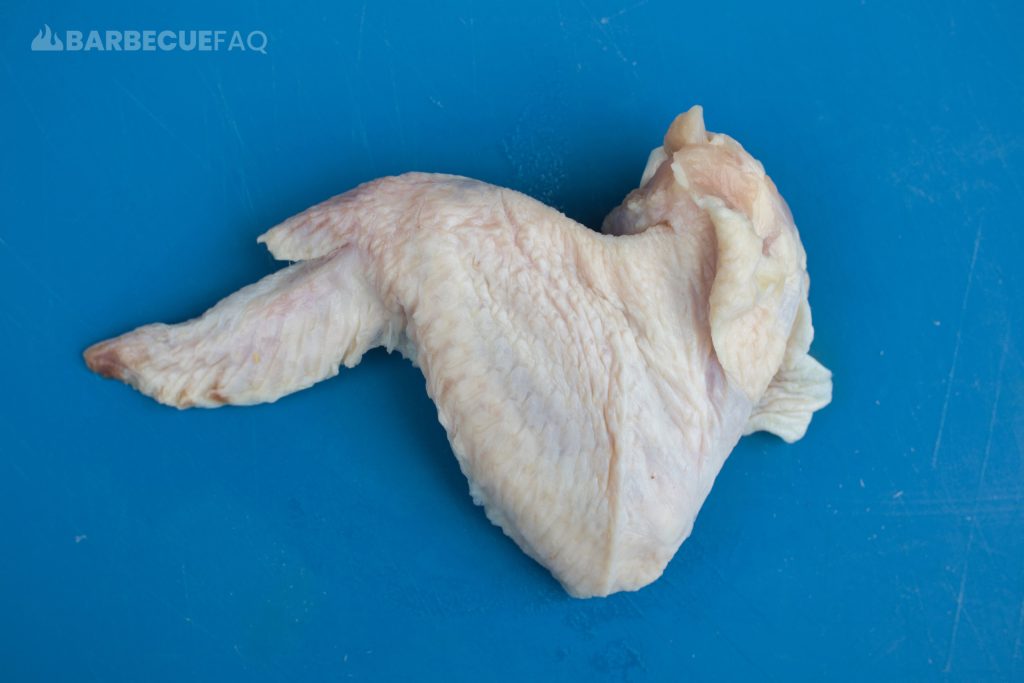In general you can expect a person to eat roughly 6-10 wings (flats and drums).
How I arrived at this number is outlined below.
Notes on calculator:
This calculator assumes 6 wings per adult.
It assumes you’re buying party packs of wings that contain 12 “whole” wings per pack or 24 drums and flats.
This calculator will round to the nearest “pack” of 12.
Determining How Much Meat is Actually On a Chicken wing
For this guide I took 10 wings (5 flats and 5 drums) and weighed them on a scale.
I then took the average of the flats and the average of the drums.
The average weight of the meat from the flats was 0.5 oz.

The average weight of the meat from the drums was 0.8 oz.

While I did my best to remove meat from the bones of the wings, the human mouth can do a much better job of cleaning the bone than I can with a fork, especially in the case of drums.
For the Nerds Who Like to Know How I Came to My Estimates
So, now we know:
- Flats: 0.5 oz meat per wing
- Drums: 0.8 oz meat per wing.
If wings are the only protein on the menu, it’s often safe to assume 4-6 oz of meat per person.
Assuming the 4 oz of meat and an equal number of flats and drums, we get the following:
- 3 flats * 0.5 oz per flat = 1.5 oz
- 3 drums * 0.8 oz per drum = 2.4 oz
The above is 3.9 oz of meat.
Assuming 6 oz of meat and an equal number of flats and drums, we get the following:
- 5 flats * 0.5 oz per flat = 2.5 oz
- 5 drums * 0.8 oz per drum = 4 oz
The above is 6.5 oz of meat.
So to round this up, roughly 6 wings would result in 4 oz of meat and roughly 10 wings would result in 6 oz of meat.
Combine that with sides like pasta salads, chips and dip, etc. That’s more than enough wings per adult.




